Dragonhead tea, made from the Dracocephalum plant, has gained attention as a natural remedy with impressive health benefits. This herbal brew offers antioxidant properties, stress relief, and digestive support, making it appealing to health-conscious tea drinkers and natural wellness enthusiasts.
This guide is perfect for anyone curious about adding dragonhead tea to their daily routine, from beginners exploring herbal teas to experienced practitioners seeking natural health solutions.
We’ll explore the science-backed health benefits that make this tea special, including its anti-inflammatory and calming effects. You’ll also learn about potential side effects and who should avoid this herbal remedy. Finally, we’ll walk through simple preparation methods so you can brew the perfect cup and get the most from this powerful plant.
Understanding Dragonhead Tea and Its Origins
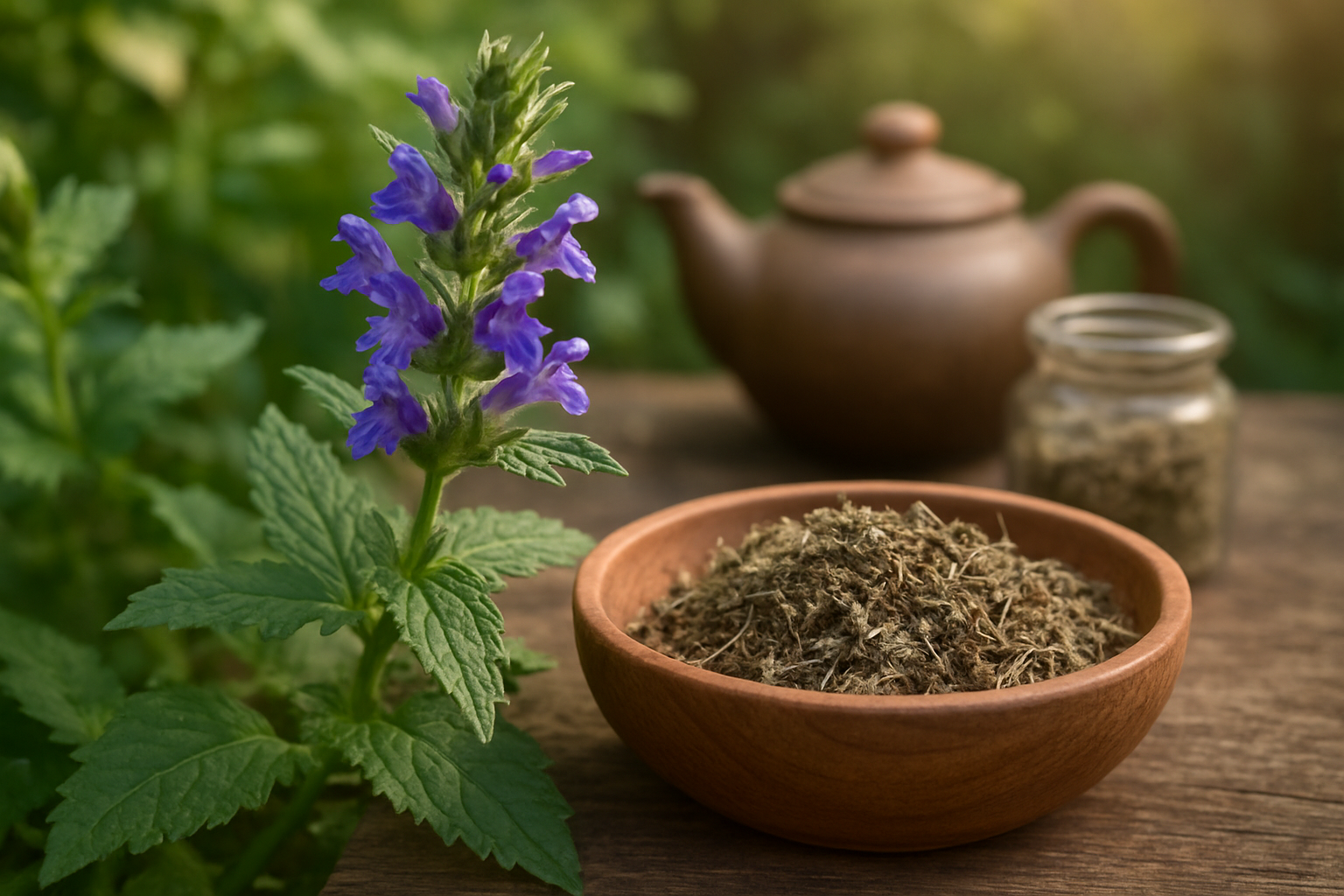
What is Dragonhead Tea and Its Botanical Background
Dragonhead tea comes from the Dracocephalum moldavica plant, commonly known as Moldavian balm or dragonhead mint. This aromatic herb belongs to the Lamiaceae family, which includes other well-known plants like mint, basil, and rosemary. The plant gets its intriguing name from the dragon-like shape of its flower heads, which feature distinctive tubular blooms arranged in dense spikes.
Native to Central Asia and parts of Eastern Europe, Dracocephalum moldavica has adapted to various climates and now grows in regions spanning from Mongolia to the Mediterranean. The plant typically reaches heights of 1-2 feet and produces small, violet-blue flowers that bloom from mid-summer through early fall. Both the leaves and flowers are used to create the herbal tea, with the plant’s essential oils concentrated most heavily in the upper portions.
The herb thrives in well-drained soils and sunny locations, making it relatively easy to cultivate in home gardens. Its hardy nature and ability to self-seed have helped it spread to new regions, though it remains most abundant in its native habitat across the steppes of Central Asia.
Traditional Uses in Herbal Medicine
Traditional medicine systems across Central Asia and Eastern Europe have relied on dragonhead tea for centuries. Mongolian healers particularly valued the herb for respiratory ailments, using it to address coughs, bronchitis, and seasonal breathing difficulties. The tea was often prepared as a warm compress for chest congestion or consumed hot to soothe throat irritation.
In traditional Tibetan medicine, practitioners used dragonhead tea to support digestive health and calm nervous tension. The herb was frequently combined with other local plants to create comprehensive healing blends tailored to individual needs. Russian folk medicine adopted similar applications, with herbalists recommending the tea for stress relief and improved sleep quality.
The plant also held significance in traditional ceremonies and daily rituals. Nomadic peoples would often carry dried dragonhead leaves during long journeys, believing the herb provided protection and maintained their connection to the earth. Women would prepare the tea for new mothers, thinking it helped with recovery and energy restoration after childbirth.
European herbalists who encountered the plant through trade routes began incorporating it into their own practices, particularly for treating headaches and mild anxiety. The herb’s pleasant aroma and gentle effects made it a popular addition to evening tea blends designed to promote relaxation.
Key Active Compounds and Nutritional Profile
Dragonhead tea contains several bioactive compounds that contribute to its therapeutic properties. The primary components include rosmarinic acid, a powerful antioxidant also found in rosemary and other mint family plants. This compound helps protect cells from oxidative stress and supports the body’s natural anti-inflammatory processes.
Essential oils make up another crucial group of active ingredients, with geranyl acetate and citronellol being the most prominent. These volatile compounds give the tea its distinctive floral aroma and contribute to its calming effects on the nervous system. The essential oil content can vary based on growing conditions, harvest timing, and preparation methods.
| Compound Category | Primary Components | Potential Benefits |
|---|---|---|
| Phenolic Acids | Rosmarinic acid, Caffeic acid | Antioxidant, Anti-inflammatory |
| Essential Oils | Geranyl acetate, Citronellol | Calming, Aromatherapeutic |
| Flavonoids | Luteolin, Apigenin | Neuroprotective, Antimicrobial |
| Tannins | Condensed tannins | Astringent, Digestive support |
The tea also provides small amounts of vitamins C and A, along with trace minerals like potassium and magnesium. While not a significant source of these nutrients, they add to the overall nutritional value of the beverage. The flavonoid content, including luteolin and apigenin, offers additional antioxidant benefits and may support cognitive function.
Tannins present in the plant contribute to the tea’s slightly astringent taste and may help with digestive comfort. The concentration of these compounds tends to be higher in leaves harvested later in the growing season, which can affect both flavor profile and potential therapeutic effects.
Proven Health Benefits of Dragonhead Tea
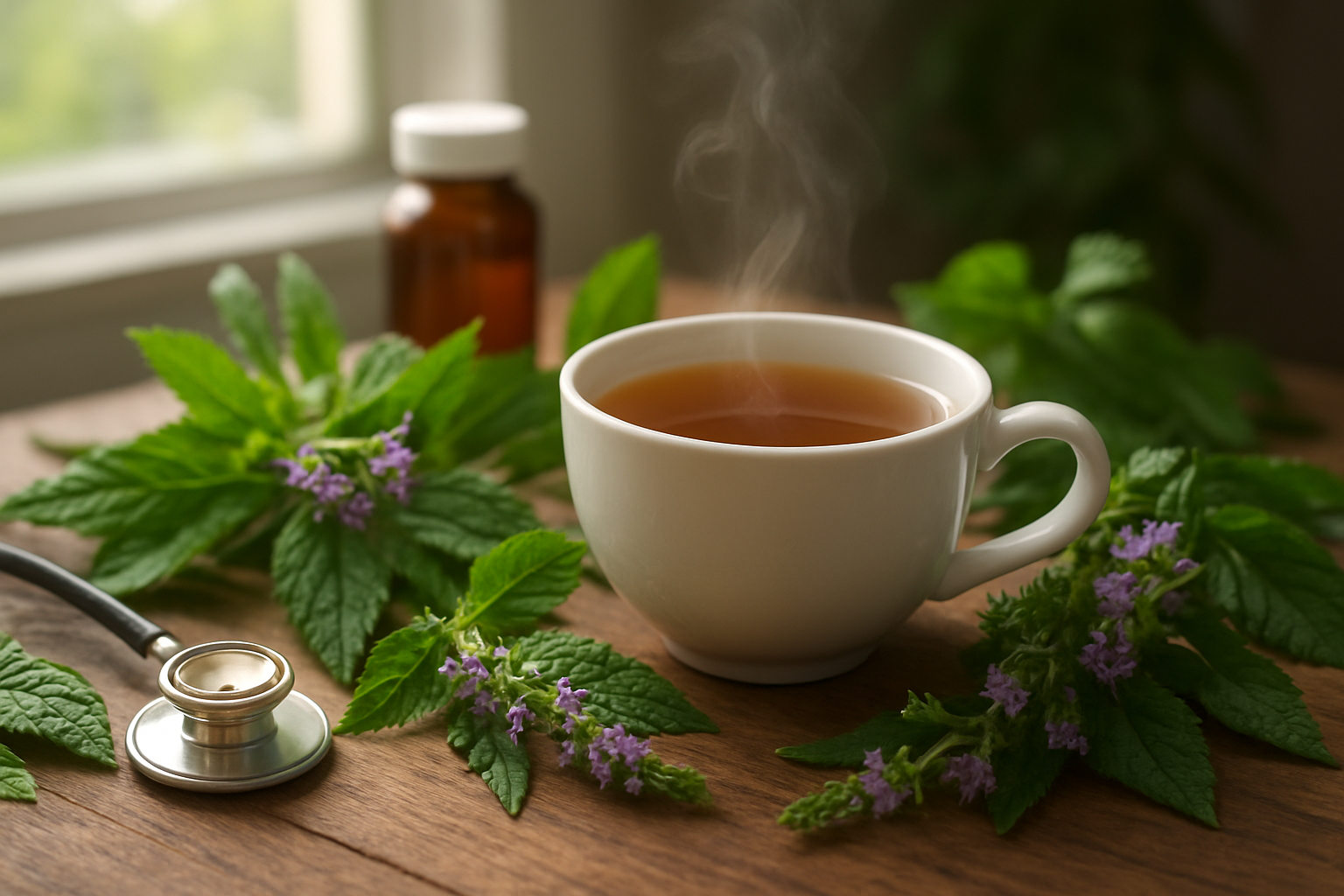
Anti-inflammatory Properties for Joint and Muscle Health
Dragonhead tea contains powerful compounds that naturally reduce inflammation throughout the body. The rosmarinic acid and caffeic acid present in dragonhead leaves work together to block inflammatory pathways, providing relief for people dealing with arthritis, muscle soreness, and general joint stiffness.
Regular consumption of dragonhead tea can help reduce the production of pro-inflammatory cytokines, which are responsible for causing pain and swelling in joints. Many users report noticeable improvements in morning stiffness and reduced discomfort after physical activity when drinking 2-3 cups daily for several weeks.
The antioxidants in dragonhead tea also protect cartilage from oxidative stress, potentially slowing down the progression of degenerative joint conditions. Athletes and physically active individuals often turn to dragonhead tea as a natural alternative to over-the-counter anti-inflammatory medications.
Digestive System Support and Gut Health Improvement
Your digestive system gets significant support from dragonhead tea’s unique blend of volatile oils and tannins. These natural compounds help soothe irritated stomach lining and promote healthy digestion by stimulating the production of digestive enzymes.
People with irritable bowel syndrome (IBS) often find relief through regular dragonhead tea consumption. The tea’s antispasmodic properties help relax intestinal muscles, reducing cramping and bloating. The herb’s mild bitter compounds also stimulate bile production, improving fat digestion and overall nutrient absorption.
Dragonhead tea acts as a prebiotic, feeding beneficial gut bacteria while creating an environment that discourages harmful microorganisms. This balance promotes:
- Better nutrient absorption
- Improved bowel regularity
- Reduced gas and bloating
- Enhanced overall digestive comfort
Immune System Strengthening Effects
The immune-boosting properties of dragonhead tea come from its high concentration of phenolic compounds and essential oils. These natural substances help your body’s defense system recognize and fight off pathogens more effectively.
Dragonhead tea contains antimicrobial compounds that work against various bacteria, viruses, and fungi. Regular drinkers often experience fewer common colds and recover more quickly when they do get sick. The tea’s vitamin C content, while modest, supports white blood cell function and collagen production.
The adaptogenic qualities of dragonhead help your immune system respond appropriately to threats without becoming overactive. This balanced response reduces the risk of autoimmune reactions while maintaining strong protection against infections.
Stress Reduction and Mental Clarity Enhancement
Dragonhead tea’s calming effects come from compounds that interact with neurotransmitter pathways in the brain. The herb contains natural sedative properties that help reduce cortisol levels and promote relaxation without causing drowsiness during daytime consumption.
Many people find that drinking dragonhead tea in the evening helps quiet racing thoughts and prepares the mind for restful sleep. The tea’s mild nervine properties support the nervous system, helping manage anxiety and stress-related tension.
For mental clarity, dragonhead tea improves focus by reducing mental fog and supporting healthy blood flow to the brain. The antioxidants protect neural tissue from oxidative damage, potentially supporting long-term cognitive health and memory function.
Cardiovascular Health Benefits
Your heart benefits from dragonhead tea through multiple mechanisms. The flavonoids present in the herb help strengthen blood vessel walls and improve circulation. These compounds also support healthy cholesterol levels by preventing the oxidation of LDL cholesterol, which can lead to arterial plaque buildup.
Dragonhead tea’s potassium content supports healthy blood pressure regulation, while its magnesium helps maintain steady heart rhythm. The anti-inflammatory effects extend to cardiovascular tissues, reducing the risk of chronic inflammation that contributes to heart disease.
Studies suggest that regular consumption of dragonhead tea may help:
- Lower blood pressure naturally
- Improve circulation to extremities
- Support healthy cholesterol ratios
- Reduce cardiovascular inflammation
- Strengthen capillary walls
The herb’s gentle diuretic effect also supports cardiovascular health by reducing excess fluid retention that can strain the heart.
Potential Risks and Safety Considerations
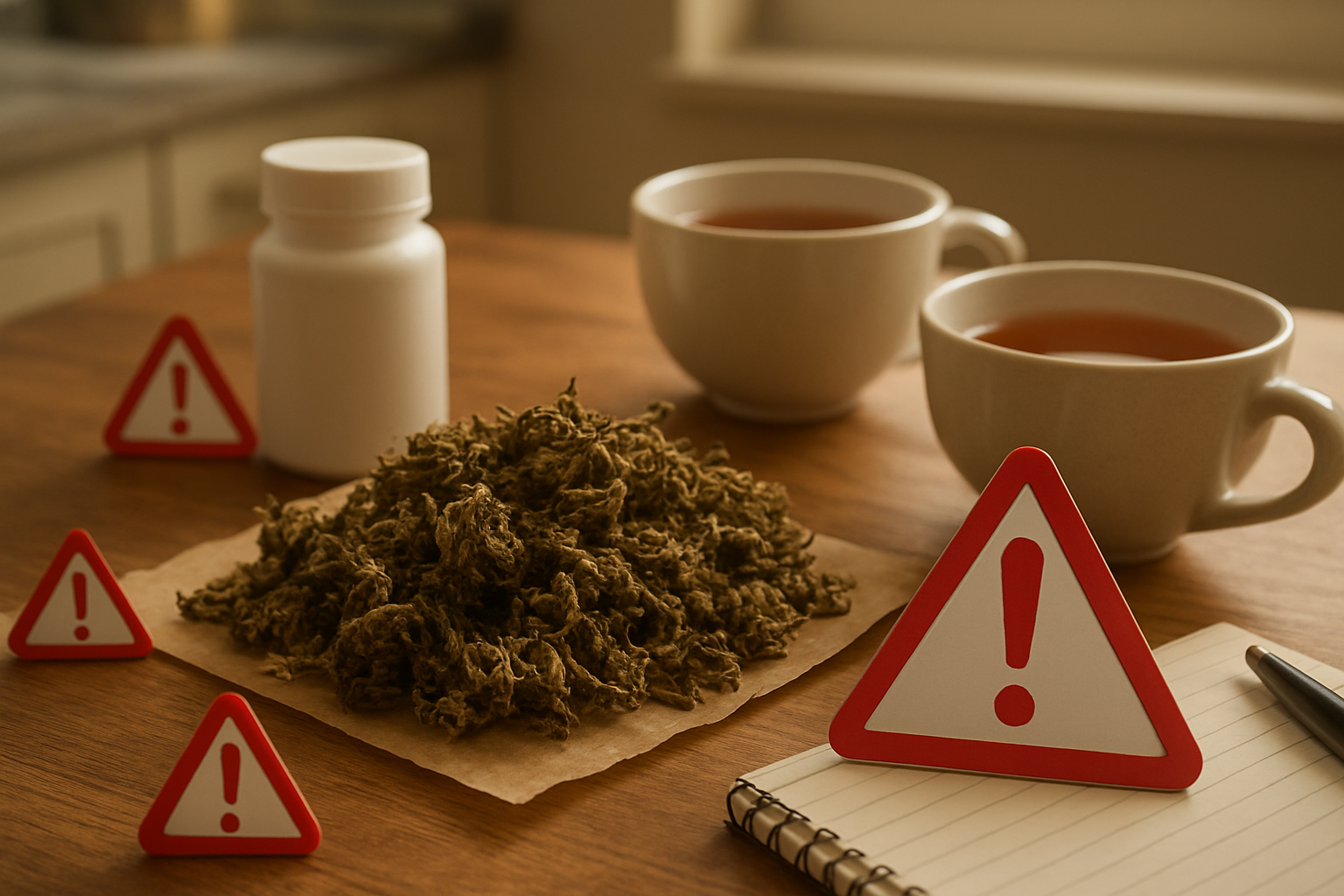
Known Side Effects and Adverse Reactions
Dragonhead tea generally causes mild side effects when consumed in moderate amounts. The most common reactions include digestive upset, mild nausea, and occasional headaches. Some people experience drowsiness within 30-60 minutes after drinking the tea, which isn’t necessarily harmful but can affect daily activities.
Skin reactions happen occasionally, especially in those with plant allergies. Watch for rashes, itching, or hives after your first few cups. If you notice any skin changes, stop drinking the tea immediately.
People with sensitive stomachs might experience cramping or loose stools. Starting with weaker concentrations helps minimize these digestive issues. Dizziness can occur when drinking strong preparations on an empty stomach.
Drug Interactions and Medical Contraindications
Dragonhead tea can interfere with several common medications. Blood thinners like warfarin pose the biggest concern since the tea may enhance their effects, potentially causing excessive bleeding. Always check with your doctor before combining them.
Sedative medications become more potent when mixed with dragonhead tea. This includes prescription sleep aids, anxiety medications, and even some antihistamines. The combination can cause dangerous levels of drowsiness.
Blood pressure medications may work differently with regular dragonhead tea consumption. The herb can lower blood pressure naturally, which might cause it to drop too much when combined with prescription drugs.
People with autoimmune conditions should avoid dragonhead tea entirely. The herb stimulates immune system activity, which can worsen conditions like rheumatoid arthritis, lupus, or multiple sclerosis.
Dosage Guidelines for Safe Consumption
Safe dragonhead tea consumption starts with proper dosing. Begin with one cup daily, using one teaspoon of dried herb per cup of hot water. This conservative approach lets your body adjust gradually.
Most adults can safely drink 2-3 cups daily without problems. Steep the tea for 5-10 minutes maximum to avoid overly concentrated brews. Stronger doesn’t mean better with herbal teas.
| Daily Amount | Frequency | Steeping Time |
|---|---|---|
| 1 tsp dried herb | 1-2 cups | 5-7 minutes |
| 2 tsp dried herb | 2-3 cups | 5-10 minutes |
| Fresh leaves (2-3) | 1-2 cups | 3-5 minutes |
Take breaks from drinking dragonhead tea regularly. Use it for 5-6 days, then take 1-2 days off. This prevents your body from building tolerance and reduces the risk of cumulative side effects.
Never drink more than 4 cups in a single day. Excessive consumption can cause significant drowsiness, digestive problems, and potentially dangerous interactions with medications.
Special Precautions for Pregnant and Nursing Women
Pregnant women should completely avoid dragonhead tea throughout all trimesters. The herb can stimulate uterine contractions and potentially trigger premature labor. No amount is considered safe during pregnancy.
The lack of comprehensive safety studies makes dragonhead tea risky for expecting mothers. Even small amounts could affect fetal development in unknown ways. Traditional use doesn’t guarantee safety for modern pregnancies.
Nursing mothers face similar risks since active compounds pass through breast milk. Babies’ developing systems can’t process these plant chemicals effectively. The tea might cause excessive sleepiness or feeding problems in infants.
Women trying to conceive should also exercise caution. Some herbal compounds can affect hormone levels and fertility. Stop drinking dragonhead tea at least one month before trying to get pregnant.
If you’re pregnant or nursing and accidentally consumed dragonhead tea, contact your healthcare provider immediately. Don’t wait to see if symptoms develop. Quick action prevents potential complications for both mother and baby.
Step-by-Step Dragonhead Tea Preparation Methods
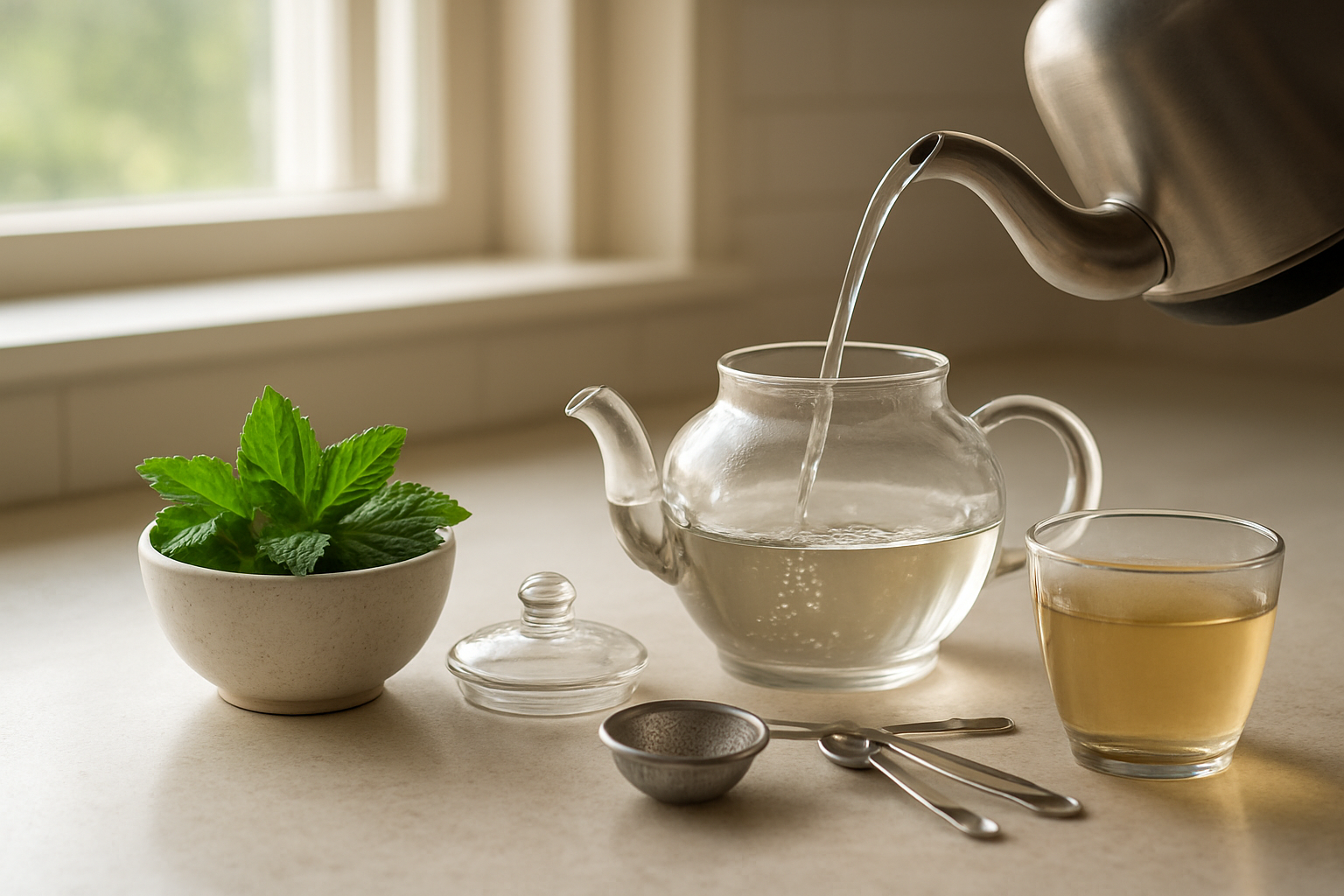
Selecting Quality Dragonhead Leaves and Herbs
Quality starts with your ingredients, and dragonhead tea is no exception. When shopping for dragonhead leaves, look for specimens that maintain their vibrant green color with minimal browning or yellowing. Fresh leaves should feel slightly springy to the touch and emit a distinctive minty-herbal aroma when gently crushed between your fingers.
Dried dragonhead leaves offer convenience and longer shelf life while retaining most therapeutic compounds. Choose leaves that appear whole rather than crumbled, as broken pieces often indicate rough handling or age. The best dried dragonhead maintains a grayish-green hue and releases its characteristic scent when the package opens.
Key quality indicators to watch for:
- Color: Fresh green without dark spots or excessive browning
- Texture: Firm leaves that aren’t brittle or mushy
- Aroma: Clean, herbal scent without mustiness
- Source: Organically grown varieties from reputable suppliers
- Storage: Properly sealed packaging protecting from light and moisture
Wild-harvested dragonhead often provides superior potency compared to cultivated varieties, but ensure your supplier follows sustainable harvesting practices. Store your dragonhead in airtight containers away from direct sunlight, and use within 12-18 months for optimal flavor and benefits.
Hot Brewing Technique for Maximum Potency
Hot brewing extracts the full spectrum of beneficial compounds from dragonhead leaves, creating a robust tea with maximum therapeutic potential. This traditional method works best when you want immediate warmth and the strongest possible medicinal effects.
Start by heating fresh, filtered water to 200-205°F (just below boiling). Avoid using fully boiling water, as excessive heat can destroy delicate volatile oils that give dragonhead tea its distinctive properties. Pre-warm your teapot or cup by rinsing with hot water, then add one teaspoon of dried dragonhead leaves per cup of water.
Pour the hot water directly over the leaves and cover immediately to trap essential oils. Steep for 5-7 minutes for a balanced flavor, or up to 10 minutes for maximum strength. Longer steeping times extract more tannins and bitter compounds, so taste-test to find your preferred intensity.
Hot brewing timeline:
- 3-4 minutes: Light, floral notes predominate
- 5-7 minutes: Full-bodied with balanced bitterness
- 8-10 minutes: Strong, medicinal taste with maximum potency
Strain the leaves completely before drinking. Add honey, lemon, or fresh mint if desired, but avoid dairy products which can interfere with certain beneficial compounds. The hot method produces tea that’s perfect for evening relaxation or when you need immediate stress relief.
Cold Steeping Method for Gentle Extraction
Cold steeping produces a smoother, less bitter dragonhead tea while preserving heat-sensitive vitamins and antioxidants. This method takes patience but rewards you with a refreshing beverage that’s perfect for hot weather or sensitive stomachs.
Use twice the amount of dried dragonhead leaves compared to hot brewing – about two teaspoons per cup of cold, filtered water. Place the leaves in a glass jar or pitcher, add room temperature water, and stir gently. Cover and refrigerate for 6-12 hours, with longer times producing stronger flavors.
The cold extraction process draws out different compounds than hot brewing, resulting in a naturally sweet taste with less astringency. Many people find cold-steeped dragonhead tea more palatable, especially when introducing children or sensitive individuals to herbal remedies.
Cold steeping benefits:
- Preserves delicate antioxidants that heat destroys
- Reduces bitter tannins for smoother taste
- Creates naturally sweet flavor profile
- Gentle on sensitive digestive systems
- Perfect base for herbal ice teas
Strain thoroughly after steeping and consume within 48 hours for best quality. Cold-steeped dragonhead tea pairs beautifully with fresh fruit, cucumber slices, or a splash of natural fruit juice. This method works particularly well during summer months when you want the benefits of dragonhead without adding heat to your system.
Maximizing Benefits Through Proper Usage
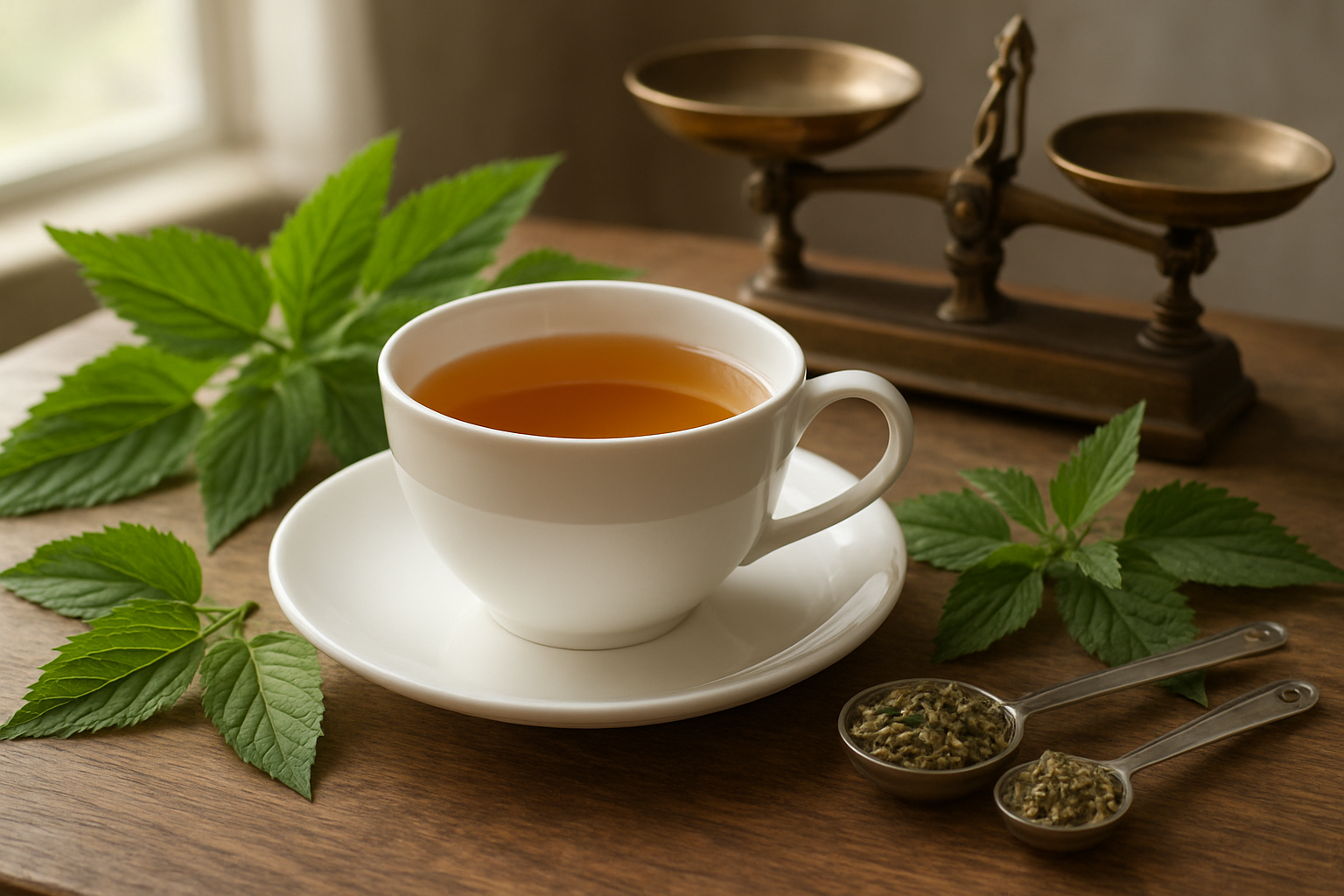
Optimal Timing and Frequency for Daily Consumption
The best time to drink dragonhead tea depends on what you’re hoping to achieve. For stress relief and better sleep, enjoy a warm cup 30-60 minutes before bedtime. The calming compounds need time to work through your system, and the ritual itself helps signal to your body that it’s time to wind down.
If you’re using dragonhead tea for digestive support, sip it after meals. The gentle herbs can help ease bloating and support healthy digestion without interfering with nutrient absorption. Morning consumption works well for those seeking mental clarity and focus throughout the day.
Most people find that 1-2 cups daily provides optimal benefits without overwhelming their system. Start with one cup and pay attention to how your body responds. Some people are more sensitive to herbal compounds and may need less, while others can comfortably handle up to three cups daily.
Space out your servings throughout the day rather than drinking multiple cups at once. This approach helps maintain steady levels of active compounds in your system and reduces the risk of any mild side effects like stomach upset.
Combining with Other Herbs for Enhanced Effects
Dragonhead tea pairs beautifully with complementary herbs that can amplify its natural benefits. Chamomile makes an excellent companion for evening blends, creating a powerful relaxation combo that many people find more effective than either herb alone.
For digestive support, try combining dragonhead with ginger or peppermint. These combinations work synergistically – ginger adds warming properties and nausea relief, while peppermint contributes cooling digestive support. Mix equal parts of dried herbs or add a slice of fresh ginger to your dragonhead tea.
Lemon balm creates another winning combination, especially for stress management and mental clarity. Both herbs belong to the mint family and share similar calming properties, making them natural partners. This blend works particularly well for afternoon tea when you need to stay alert but relaxed.
| Herb Combination | Primary Benefits | Best Timing |
|---|---|---|
| Dragonhead + Chamomile | Deep relaxation, sleep support | Evening |
| Dragonhead + Ginger | Digestive health, nausea relief | After meals |
| Dragonhead + Lemon Balm | Stress relief, mental clarity | Afternoon |
| Dragonhead + Peppermint | Cooling digestion, headache relief | Anytime |
Always introduce new herb combinations gradually. Start with small amounts to see how your body responds before making them a regular part of your routine.
Storage Tips to Maintain Freshness and Potency
Proper storage makes the difference between potent, flavorful tea and weak, stale leaves that deliver minimal benefits. Keep your dragonhead tea in airtight containers away from direct sunlight, heat, and moisture. Glass jars with tight-fitting lids work perfectly, but food-grade metal tins also do the job well.
Your pantry or a cool, dark cupboard provides ideal storage conditions. Avoid storing tea near the stove, dishwasher, or any heat sources that create temperature fluctuations. These conditions break down the volatile oils that give dragonhead tea its therapeutic properties.
Dried dragonhead leaves maintain their potency for 12-18 months when stored properly. Fresh leaves should be used within a week or dried for long-term storage. You can tell your tea is losing potency when the color fades significantly or the characteristic aroma becomes weak.
Label your storage containers with the date of purchase or harvest. This simple step helps you rotate your stock and use older tea first. If you buy in bulk, portion your tea into smaller containers to minimize air exposure each time you make a cup.
Freezing isn’t recommended for dried herbs as it can create moisture issues when the tea returns to room temperature. However, you can freeze fresh dragonhead leaves in ice cube trays with a little water for quick addition to hot water later.
Recognizing Quality Indicators When Purchasing
High-quality dragonhead tea shows vibrant green to grayish-green coloration with minimal brown or yellowed leaves. The leaves should appear whole or in large pieces rather than powdered or heavily broken. Excessive dust at the bottom of the package often indicates old or poorly handled tea.
Fresh dragonhead tea carries a distinctive minty, slightly citrusy aroma that’s immediately noticeable when you open the container. If the tea smells musty, stale, or has no scent at all, look for a different supplier. Quality herbs should smell inviting and aromatic.
When possible, buy from reputable herbal suppliers who provide information about harvest dates and growing conditions. Organic certification ensures the tea is free from pesticides and other chemicals that could interfere with its natural benefits. Small-batch suppliers often offer fresher products than mass-market brands.
Check the packaging date and avoid products that have been sitting on shelves for extended periods. Some suppliers include harvest dates, which gives you even better information about freshness. Tea that’s been properly dried and stored should feel crisp and break cleanly when crushed between your fingers.
Price can be an indicator, but the most expensive option isn’t always the best. Look for suppliers who specialize in herbal teas rather than general grocery stores, as they typically have better turnover and storage practices. Read customer reviews to get insights into the actual quality and effects people experience with different brands.
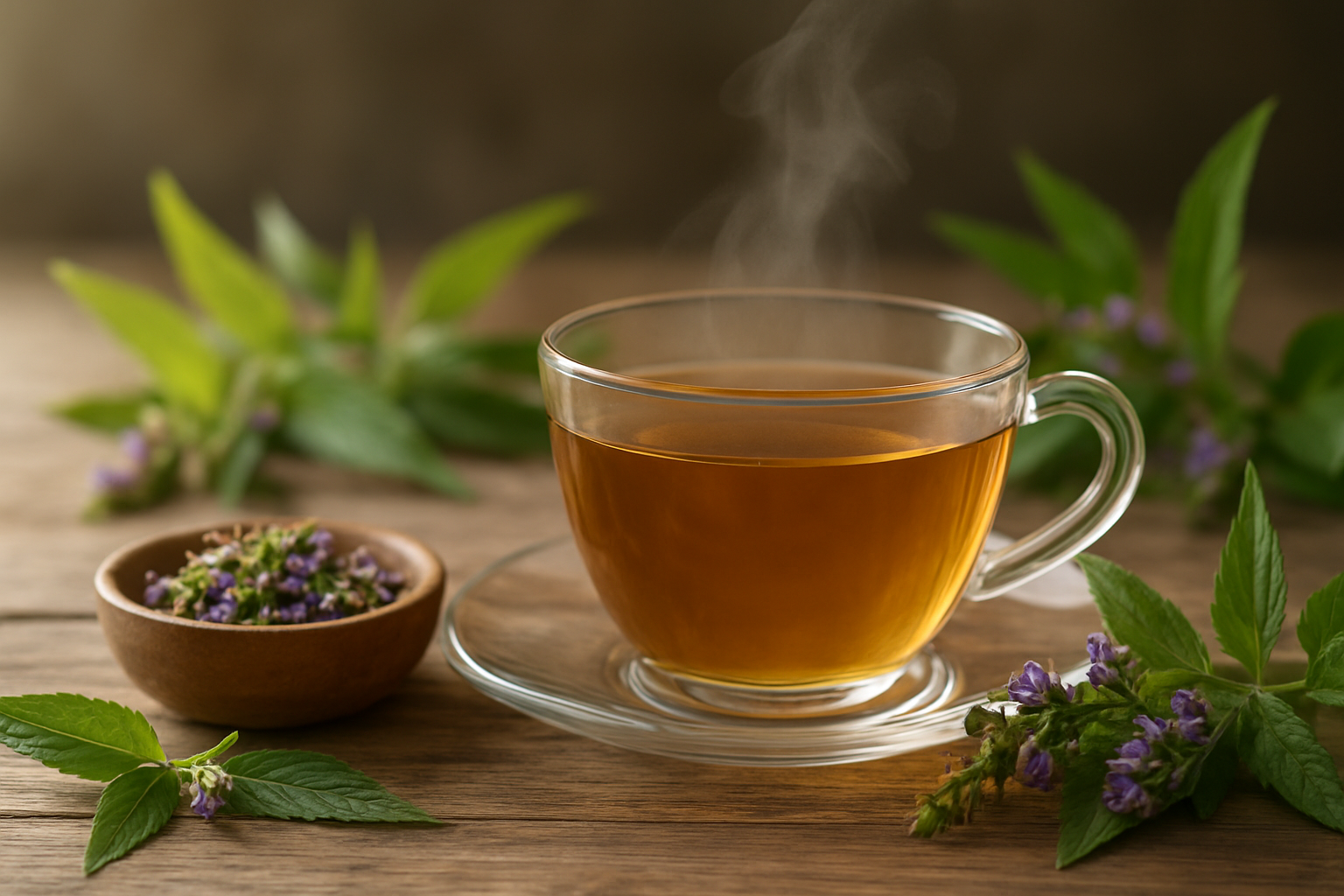
Dragonhead tea offers a compelling blend of traditional wisdom and modern wellness benefits. From its impressive antioxidant properties to its potential for supporting digestive health and reducing inflammation, this herbal brew stands out as more than just another trendy tea. The preparation process is refreshingly simple, making it accessible for anyone curious about exploring natural health alternatives.
Remember to start slowly with dragonhead tea and pay attention to how your body responds. While the health benefits are promising, being mindful of potential interactions with medications and individual sensitivities will help you enjoy this herbal remedy safely. Give dragonhead tea a try using the brewing methods we’ve covered, and you might just discover your new favorite way to support your daily wellness routine.













